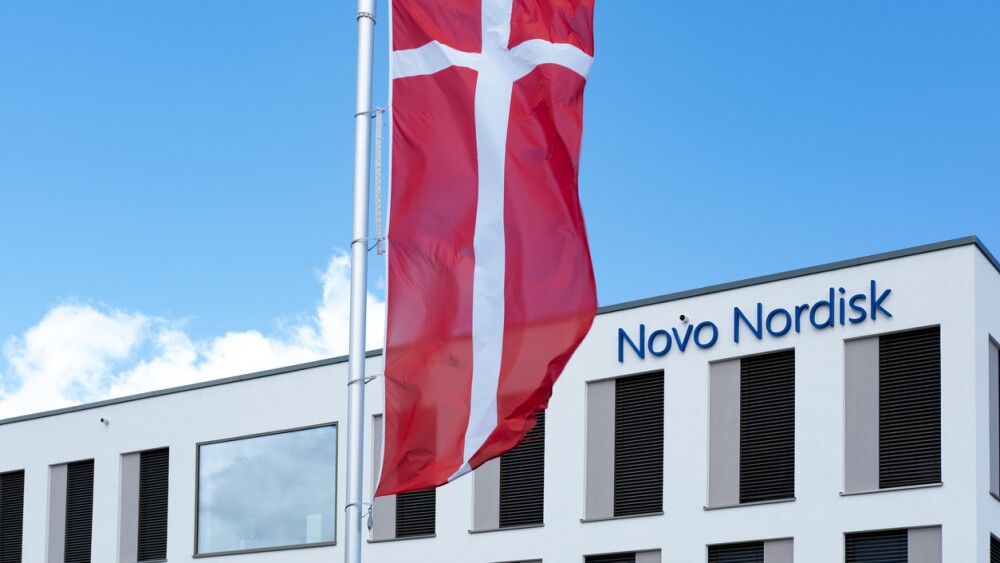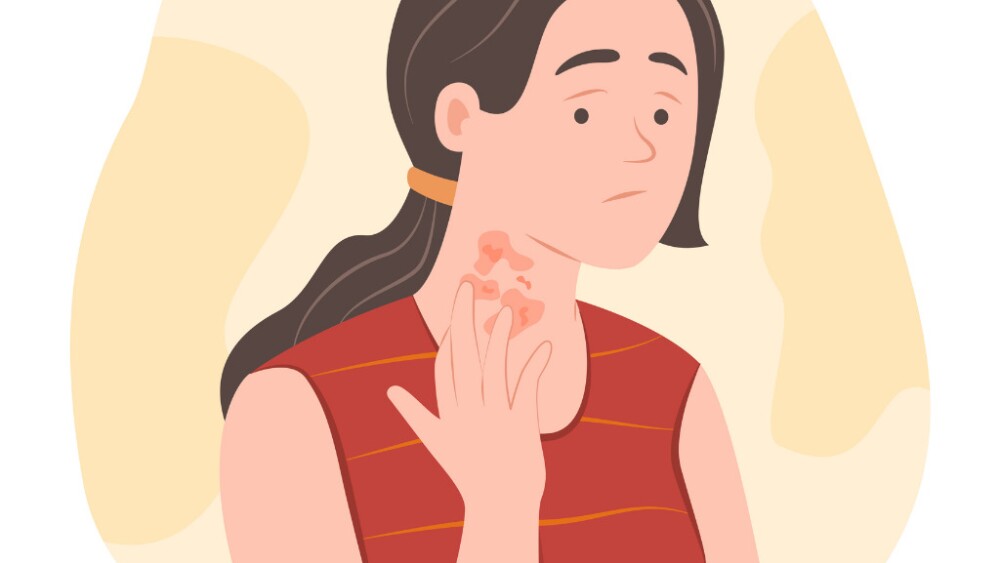The top COVID-19 story is on the pause of the Johnson & Johnson vaccine in the U.S. over rare blood clots. But it’s not the only news. Here’s a look.
The top COVID-19 story is on the pause of the Johnson & Johnson vaccine in the U.S. over rare blood clots. But it’s not the only news. Here’s a look.
Theories on Why COVID-19 Vaccines Cause Blood Clots
To date, both the AstraZeneca-Oxford and Johnson & Johnson COVID-19 vaccines have been associated with extremely rare but potentially life-threatening blood clots. The U.S. Food and Drug Administration (FDA) and the Centers for Disease Control and Prevention (CDC) have recommended a pause in using the J&J vaccine. The AstraZeneca vaccine is not yet authorized in the U.S., but several European countries have halted the distribution of that vaccine as well.
The vaccines have not been definitively tied to the clots, and there are currently only theories as to why the vaccines might cause these rare blood clots.
Both the J&J and AstraZeneca vaccines use the same technology. They use an adenovirus, a common cold virus, to carry the gene for the COVID-19 virus’s spike protein into the body, where it produces the protein, and the immune system is trained to recognize it. The J&J vaccine utilizes a human adenovirus, while the AstraZeneca vaccine uses a chimpanzee version.
The leading theory appears to be an unusual and rare immune response similar to heparin-induced thrombocytopenia (HIT), where the immune system makes antibodies to a complex of heparin and a protein known as platelet factor 4 (PF4). This causes platelets to form dangerous clots throughout the body. Some research has found that patients with clots had antibodies to PF4.
A research team out of the University of Griefswald initially called the reaction in the AstraZeneca cases vaccine-induced prothrombotic immune thrombocytopenia but have modified it to vaccine-induced immune thrombotic thrombocytopenia (VITT). Their theory is that there are about 50 billion virus particles in each dose of the vaccine, and some might break apart and release their DNA. Like heparin, DNA has a negative charge that might help bind it to PF4, which has a positive charge. That bound complex might trigger antibodies’ production, which could signal the body to increase blood coagulation.
However, they also speculate that these patients may have antibodies already present, and the vaccines boost them. Additional work will need to be conducted.
Paul Offit, director of the Vaccine Education Center at Children’s Hospital of Philadelphia, a member of the FDA’s vaccines advisory committee, notes there are quite a several unresolved questions.
“What you really would love to know,” he said, “is what is causing the immune response to platelet factor 4?”
Is some component of the adenovirus mimicking PF4? Does that happen with other adenoviruses? Offit thinks it is a class-wide problem, suggesting that what is causing clots in the AstraZeneca vaccine is a similar mechanism to the J&J vaccine.
“There is going to be something about the adenovirus — whether it’s adenoviral DNA or an adenovirus protein — that complexes with platelet factor 4. So that will be determined, I suspect soon.”
Is the FDA/CDC’s J&J Pause an Overreaction?
Because of the rarity of the blood clots and the urgent need for vaccine distribution, some critics have wondered if the FDA and CDC’s pause of the J&J vaccine rollout is an overreaction. Both organizations have said the pause was “out of an abundance of caution.” The Biden Administration noted that to date, the J&J vaccine only accounts for about 5% of distribution in the U.S.
“The issue with these types of blood clots is if one administered standard treatment, one can actually cause tremendous harm or the outcome can be fatal,” Peter Marks, director of the FDA’s Center for Biologics Evaluation and Research, stated. “One needs to make sure providers are aware if they see people with low blood platelets or blood clots, to inquire about recent vaccination and act accordingly.”
Marks also points out that the pause is a recommendation, but if healthcare providers offering the J&J vaccine think it outweighs their patients’ risk, they can still offer it. “We’re not going to stop a provider from administering a vaccine. The benefit/risk will be beneficial overall to that individual in a large majority of cases.”
The only other vaccine authorized for distribution using adenovirus-vector vaccines is for Ebola. Moreover, it has been pointed out that with the rate of the clots running around one in a million, literally, the Ebola vaccine has not been given in large enough numbers to see clotting episodes.
However, the dangerous clots appear in women between 18 and 48 in the U.S.; this demographic might potentially be viewed as a higher risk. There is no clear association with hormonal contraception, which also carries a small risk of thrombosis.
“Until there is a better understanding of the frequency and impact of this finding, it will be important to encourage pregnant and postpartum women who wish to be vaccinated to receive the mRNA vaccines: Pfizer or Moderna,” Christopher Zahn, vice president for practice activities for the American College of Obstetricians and Gynecologists (ACOG), said in a statement.
Pfizer Works to Speed Up its Vaccine Delivery Because of J&J Pause
In light of the J&J vaccine pause, Albert Bourla, Pfizer’s chief executive officer, tweeted that the company could complete an order of 300 million of its vaccines two weeks early following CDC guidance. The original contract was to provide 300 million doses by the end of July, but it looks like they can hit that goal two weeks earlier, with 10% more than initially agreed to deliver by the end of May.
EU Commission Will Not Renew AstraZeneca and J&J COVID-19 Vaccine Contracts
According to the Italian daily La Stampa, the European Union Commission indicated it would not renew COVID-19 vaccine contracts with AstraZeneca and Johnson & Johnson next year.
The newspaper wrote, “The European Commission, in agreement with the leaders of many (EU) countries, has decided that the contracts with the companies that produce (viral vector) vaccines that are valid for the current year will not be renewed at their expiry.”
The Commission has decided to focus on mRNA vaccines such as Pfizer-BioNTech and Moderna’s, although they also indicate they are keeping all options open for 2022 and beyond.
Moderna’s Vaccine More than 90% Effective Six Months After 2nd Shot
More data continues to come in over the durability of the vaccines’ responses. On April 2, Pfizer-BioNTech had reported their vaccine provided high protection for at least six months after the second dose. It may be significantly longer, but the data currently available is for six months. Yesterday, Moderna reported that its vaccine was more than 90% effective at protecting against COVID at six months and more than 95% effective against severe disease for the same time frame.
Sinovac’s Vaccine Appears to Have Only about 50% Efficacy
One of the vaccines coming out of China, made by Sinovac Biotech, was reported to have efficacy levels of slightly above 50% in a clinical trial in Brazil. This was generally considered the lower threshold by most regulators globally for approval. The Moderna and Pfizer-BioNTech vaccines have an efficacy rate of about 95%, as does Russia’s Sputnik V, while other vaccines from Chinese companies seem to have efficacy rates between 66% and 79%.
The Sinovac vaccine does appear to have higher efficacy against severe COVID-19 infections—about 84% for medical interventions and 100% for moderate-to-severe COVID-19. For mild disease, it appears to be about 50%.





